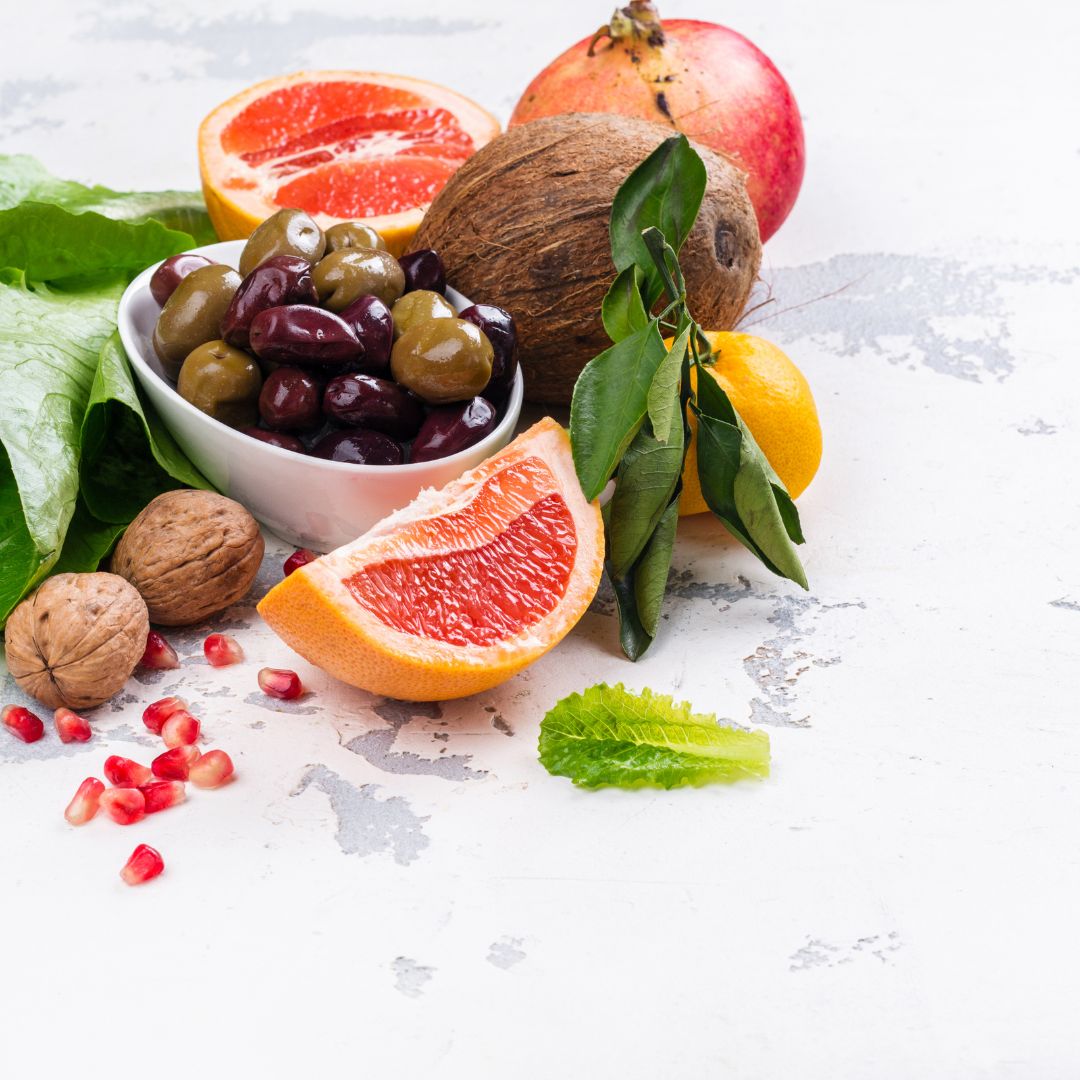
Eat your way to amazing skin
Most people don’t give a second’s thought to their skin – unless they’re scowling at the wrinkles or wobbly bits in the mirror. But when you suffer with PCOS, it can be something that you think about all the time. Sometimes making us avoid reflective surfaces or feel we can’t go out without a ton of make-up.
While diet isn’t the only answer, there are some changes that we can make fairly easily, that can have hugely positive effects on our skin.
Ditch the bad guys
A diet high in refined carbohydrates and sugar can not only play havoc with our hormones, but with PCOS can cause insulin to spike consistently leading to high levels of androgens (male hormones). Stick to a wholefoods diet full of good quality protein, brightly coloured veggies and healthy fats.
Alcohol, caffeine, food additives like flavourings and colourings, salt, sugar, and tobacco are full of cell-damaging free radicals, which play havoc with your skin. Ideally, cut them out altogether but certainly reduce them as much as you can.
Be fat-friendly
Essential fats found in fish, avocados, nuts and seeds keep cell membranes soft and smooth – they’re nature’s perfect skin plumpers. Just in case the word ‘fat’ sends a red flag up for you, I want to reassure you that scientists have finally admitted all that ‘fat is bad for you and makes you fat’ propaganda was utterly flawed. Eating the right fat is not only not bad, but also really, truly GOOD for your health. And, when inflammation is such a key part of why our PCOS symptoms happen, particularly cystic acne, including those gorgeous anti-inflammatory Omega 3 fats in oily fish, nuts and seeds can really help.
Eat to reduce inflammation
Stock up on antioxidant-rich fruit and veg. These are crucial for your entire body – not just your skin. They help to reduce the systemic inflammation linked with PCOS. Eat them raw or lightly steamed as cooking for long periods destroys enzymes, minerals and vitamins and can create skin-damaging free radicals.
A couple of simple exercises are these: make a concerted effort to add at least one extra portion of veg every night this week to your evening meal. You should also aim to ‘eat a rainbow’ over the course of the week – that means picking as many different colours of fruit and veg as you can.
As a very general rule, each different colour group contains a different set of plant chemicals. Scientists now know that bringing a variety of different antioxidants into your diet has a synergistic effect, which means the combined result is more powerful than the individual parts.
Drink up!
Keep skin cells plump and full by watching your hydration, this can help prevent overproduction of sebum, if you are well hydrated. Cells also need water to rebuild and to remove the build-up of waste products (toxins). It’s a very simple (and free) step that most people don’t prioritise and yet the results and be striking. Aim for at least 2-3 litres a day depending on weather conditions and your level of exercise. You’ll soon see the benefit for your skin.
Helpful nutrients for skin health
Vitamin A helps control the rate of keratin. A lack of vitamin A can result in dry, rough skin. Foods to include: sweet potato, carrots, butternut squash, spinach, kale, collard greens, turnip greens, romaine lettuce.
Zinc for the production of skin cells. It also helps to reduce androgen activity, and it has anti-bacterial and anti-inflammatory properties. Foods to include: venison, fish, ginger root, lamb, lean beef, turkey, green vegetables, oats, nuts, sesame seeds, pumpkin seeds, yoghurt, scallops.
Vitamins A, C, E and selenium are antioxidants that limit the damage by free radicals and helps the skin to heal. Foods to include (aside from the vitamin C foods, above, and the vitamin A foods, below): sunflower seeds, almonds, spinach, swiss chard, papaya, mustard greens, asparagus, peppers, Brazil nuts, fresh tuna, some meats including pork, beef, turkey and chicken, cottage cheese, eggs, brown rice, sunflower seeds, spinach, oats, mushrooms.
Essential fats for making cell membranes. A lack of essential fats causes cells to dry out too quickly, resulting in dry skin. Foods to include: oily fish (salmon, sardines, halibut, scallops), flaxseed, walnuts, soya beans, tofu.
Watch what you put on your body, too
The skin is the largest organ in the body with a surface area about the size of a double bed. It soaks everything up you put on it, and what soaks in ends up in your blood stream.
So, if your shampoo and conditioner or shower gel (all of which wash over you as you shower), or your body lotions or creams contain nasty chemicals like parabens or sodium lauryl/laureth sulplate, you are feeding yourself synthetic oestrogens that can wreak havoc with your hormones. Check labels for ingredients – often they may be marked as paraben-free.
Learn how to deal with problem skin
A targeted nutrition plan can work wonders for skin problems like acne, particularly with PCOS. This kind of personalised nutrition is often poorly understood and isn’t really talked about in the media. It doesn’t work to just add to your diet a single ‘superfood’. However, a bespoke plan that takes into all of your skin – and health – concerns can make a huge difference. Ask me how. We’d love to help – why not book a call?